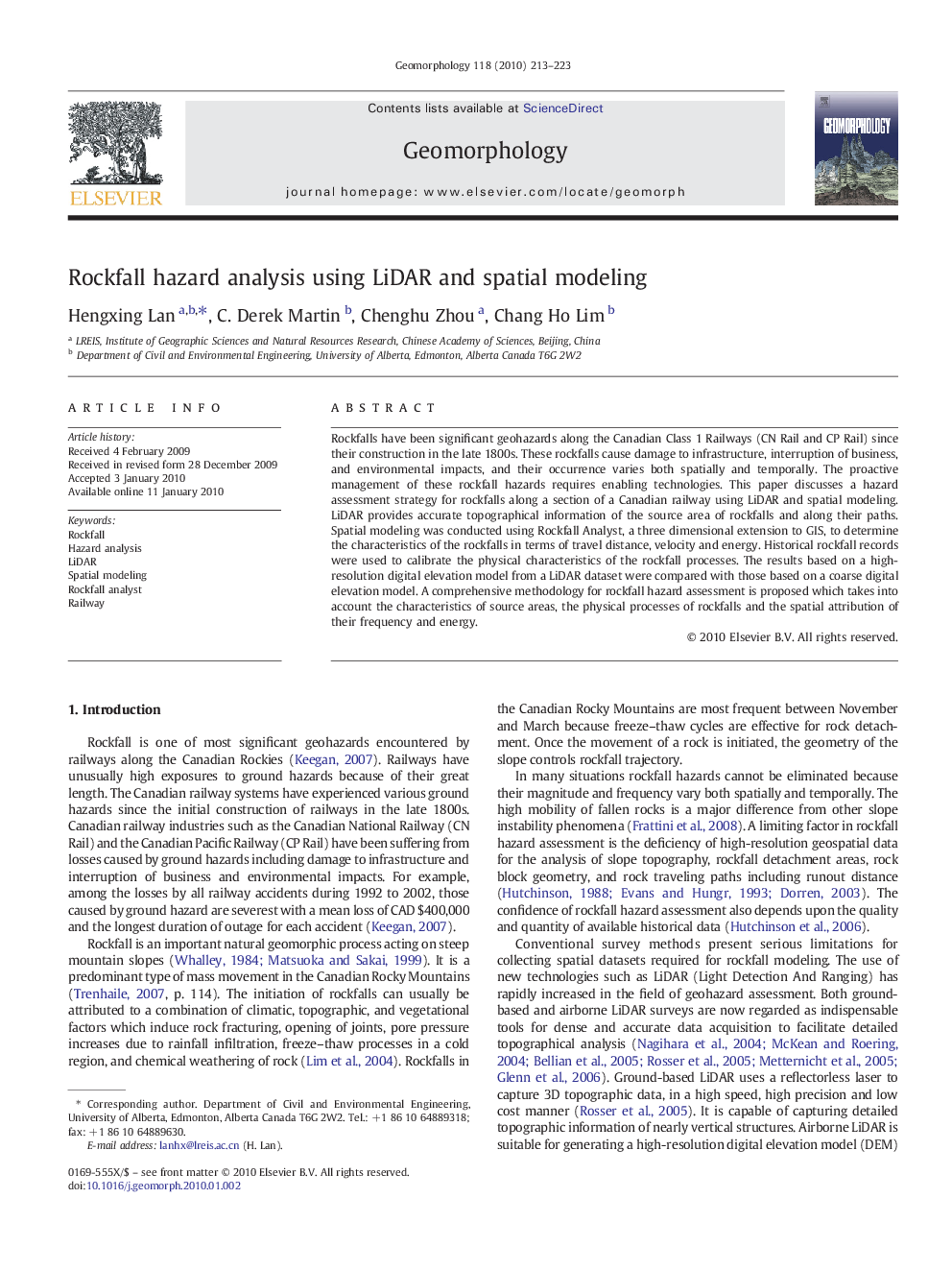| Article ID | Journal | Published Year | Pages | File Type |
|---|---|---|---|---|
| 4686063 | Geomorphology | 2010 | 11 Pages |
Rockfalls have been significant geohazards along the Canadian Class 1 Railways (CN Rail and CP Rail) since their construction in the late 1800s. These rockfalls cause damage to infrastructure, interruption of business, and environmental impacts, and their occurrence varies both spatially and temporally. The proactive management of these rockfall hazards requires enabling technologies. This paper discusses a hazard assessment strategy for rockfalls along a section of a Canadian railway using LiDAR and spatial modeling. LiDAR provides accurate topographical information of the source area of rockfalls and along their paths. Spatial modeling was conducted using Rockfall Analyst, a three dimensional extension to GIS, to determine the characteristics of the rockfalls in terms of travel distance, velocity and energy. Historical rockfall records were used to calibrate the physical characteristics of the rockfall processes. The results based on a high-resolution digital elevation model from a LiDAR dataset were compared with those based on a coarse digital elevation model. A comprehensive methodology for rockfall hazard assessment is proposed which takes into account the characteristics of source areas, the physical processes of rockfalls and the spatial attribution of their frequency and energy.
